Understanding ISO 50001 and How Air Compressors Fit In
ISO 50001:2018 is a global standard for business energy management. Energy performance is important because compressed air systems use 10 to 30 per cent of a plant’s electricity.
Understanding ISO 50001 and its connection to air compressors is essential for businesses looking to reduce costs, enhance energy efficiency, and meet sustainability goals.
Optimising energy management and air systems includes substantially reducing energy waste. Waste often originates from air leakage, bad pressure settings, and inferior optimisation strategies.
This blog post covers how ISO 50001 relates directly to compressed air systems and offers approaches to modifying energy usage to lower costs.
What is ISO 50001?
The ISO 50001 standard outlines a framework and establishes energy management systems (EnMS) that assist businesses in tracking, managing, and reducing energy usage.
Continuous improvement is sought for energy efficiency using the Plan Do Check Act (PDCA) methodology.
There are specific requirements to certify for ISO 50001:
- Produce an energy policy.
- Plan energy usage, including the collection of data and review of the same.
- Create energy performance indicators (EnPIs) and establish energy objectives.
- Establish and execute energy-saving actions.
- Monitor, measure, and verify energy performance.
- Optimise operations using a continuous improvement approach.
Companies that fully implement ISO 50001 typically reduce energy use from 10 to 30 per cent.

The Role of Air Compressors in Industrial Energy Use
Major automotive, manufacturing, food production, and healthcare industries depend on compressed air systems.
Nevertheless, they suffer from flawed inefficiencies, where up to half the energy is lost. This is because the heat generated through compressed air production is discarded rather than utilised elsewhere in the plant.
Several common wasteful ways impact compressed air systems:
- Over pressurisation – overly high air pressure settings versus what is required. This wastes energy. Every 1 bar of extra air pressure requires 7 per cent more energy in production.
- Air leaks – losing 20 to 30 per cent of produced air because of leakages.
- Poor system design – extended air distribution networks, overly small compressors, and no air tank for storage all contribute to wasted energy.
- Inferior or ignored maintenance – clogged drains, filters, and dilapidated seals cause pressure losses, dirtier air, leaks, and unexpected breakdowns.
Fixing the above issues can lead to potential energy savings. Energy costs can decline by 20 to 40 per cent depending on the severity of the inefficiencies discovered.
Do you believe your business is suffering from energy waste? Discuss it with our experienced team at Anglian Compressors, a branch of Atlas Copco.
Integrating Air Compressors into an ISO 50001 Energy Management System
A disciplined, steady approach is required to integrate air compressors into the ISO 50001 energy management framework.
Identifying Compressed Air as a Significant Energy Use (SEU)
As part of ISO 50001 terminology, machinery or systems that are substantial energy users are referred to as SEUs.
An air compressor is one of the largest SEUs in any organisation, perhaps the largest one in an industrial setting.
Energy Review and Baseline Establishment
Conducting an energy audit is an excellent starting point when considering compressed air usage. This establishes a baseline.
As part of the audit, significant factors affecting energy performance are identified. These may include voluminous duty cycles, substantial load variations, and air system losses due to multiple factors. These all offer areas to examine more carefully.
Setting ISO 50001 Objectives and Targets
As part of ISO 50001, it is useful to set targets and objectives connected to it.
These might include cutting energy consumption from compressed air generation by 20 per cent within 2 years.
Establishing a set of EnPIs, including metrics like specific energy consumption (SEC), to generate a single output unit is also necessary.
Action Plan for Energy Optimisation
A plan to address energy consumption through better optimisation is put in place.
The plan may include suggestions like:
- Purchasing variable speed drive compressors.
- Consistent air leak detection and scheduled repair planning.
- Control systems and adjusted pressure settings to reduce unnecessary waste.
- Adopting compressed air best practices and training staff to administer them.
Energy Performance Indicators (EnPIs) for Compressed Air Systems
EnPIs allow companies to monitor energy performance and look for improvements. They are highly beneficial for compressed air systems.
Key EnPIs for compressed air systems:
- Air leakage rate (losses as a percentage of air production).
- Specific energy consumption (SEC).
- Pressure drops within the air system (pressure losses versus pressure expected).
- Heat recovery efficiency (waste heat recovered as a percentage of available waste heat).
- Utilisation rate (efficiently used compressed air as a percentage)
Monitoring Methods
Collect real-time data using pressure sensors, flow meters, and thermal mass flow meters.
Install automated energy monitoring systems, including ISO 50001 tracking systems.
Will energy performance indicators help your business? Find out by talking with Anglian Compressors, a branch of Atlas Copco.
Best Practices for Enhancing Air Compressor Efficiency
Follow industry best practices to boost efficiency levels.
Regular Maintenance and Servicing
Clear or replace air filters when clogged. This allows proper flow and avoids pressure drops.
Examine pipework and associated fittings for potential air leakages.
Take system moisture seriously. Drain the system when there is a build-up. This prevents air contamination and machine corrosion.
Leak Detection and Repair
Use ultrasonic leak detection equipment to source minor leaks that are not located using other methods.
Establish a leak detection schedule based on a 3–6 month rotation.
Optimise System Pressure
Assess whether reducing air pressure levels is appropriate. Even a small pressure reduction provides substantial energy savings.
Install pressure regulators and other control systems. These help to maintain compressor pressure levels at a minimum acceptable bar/psi level.
Heat Recovery Solutions
The electricity used to power the air compressor eventually turns into heat. Up to 90 per cent of power usage is output this way.
Embrace heat recovery systems and reuse them for water, space, or process heating. This significantly improves energy efficiency by lowering water and space heating bills.
Upgrade to Energy-Efficient Technology
When it makes sense, replace fixed-speed air compressors with variable speed drive machines. These machines run only at the required settings rather than at a constant pressure level.
Use better filtration and energy-efficient air dryers. These prevent pressure drops, avoiding the need to generate higher-pressurised air to compensate.
Utilise smart control systems. These offer remote access, automated processes, and operational scheduling for compressors. As a result, machine runtime is reduced.
Case Studies: Successful Implementation of ISO 50001 with Air Compressors
Here are three case study examples for your consideration.
Example 1: Manufacturing Facility
A manufacturing facility implemented ISO 50001 in conjunction with an air audit.
As a result, they lowered energy expenditures by 30 per cent. Heat recovery, pressure level optimisation, and better leak detection proved crucial.
Example 2: Automotive Industry
An automotive company switched to variable speed compressors, which cut its energy usage by 20 per cent overnight.
Real-time monitoring tracked compressor performance. This provided significant gains, too.
Example 3: Food and Beverage Industry
A food and beverage company arranged for an analysis of its compressed air system, performed to coincide with its move toward ISO 50001.
Following the analysis and steps to reduce energy consumption, the company saved 15 per cent on future energy bills. Scheduling compressed air production and fixing air leaks also significantly reduced energy use.
Conclusion
The ISO 50001 program offers a valuable framework in industrial settings. There is considerable opportunity to adopt best practices to reduce energy waste, cut costs, and improve operational sustainability.
Companies willing to be proactive in their approach to ISO 50001 gain significantly when assessing their air systems for improvements. Subsequent monitoring and optimisation offer substantial financial benefits for businesses open to it.
Assess your existing energy management system. Look for obvious inefficiencies that were previously overlooked. Schedule an air audit to identify large and small areas for improvement.
Let Anglian Compressors, a branch of Atlas Copco, power your air system toward greater efficiency, energy savings, and heightened performance. Contact us today.


